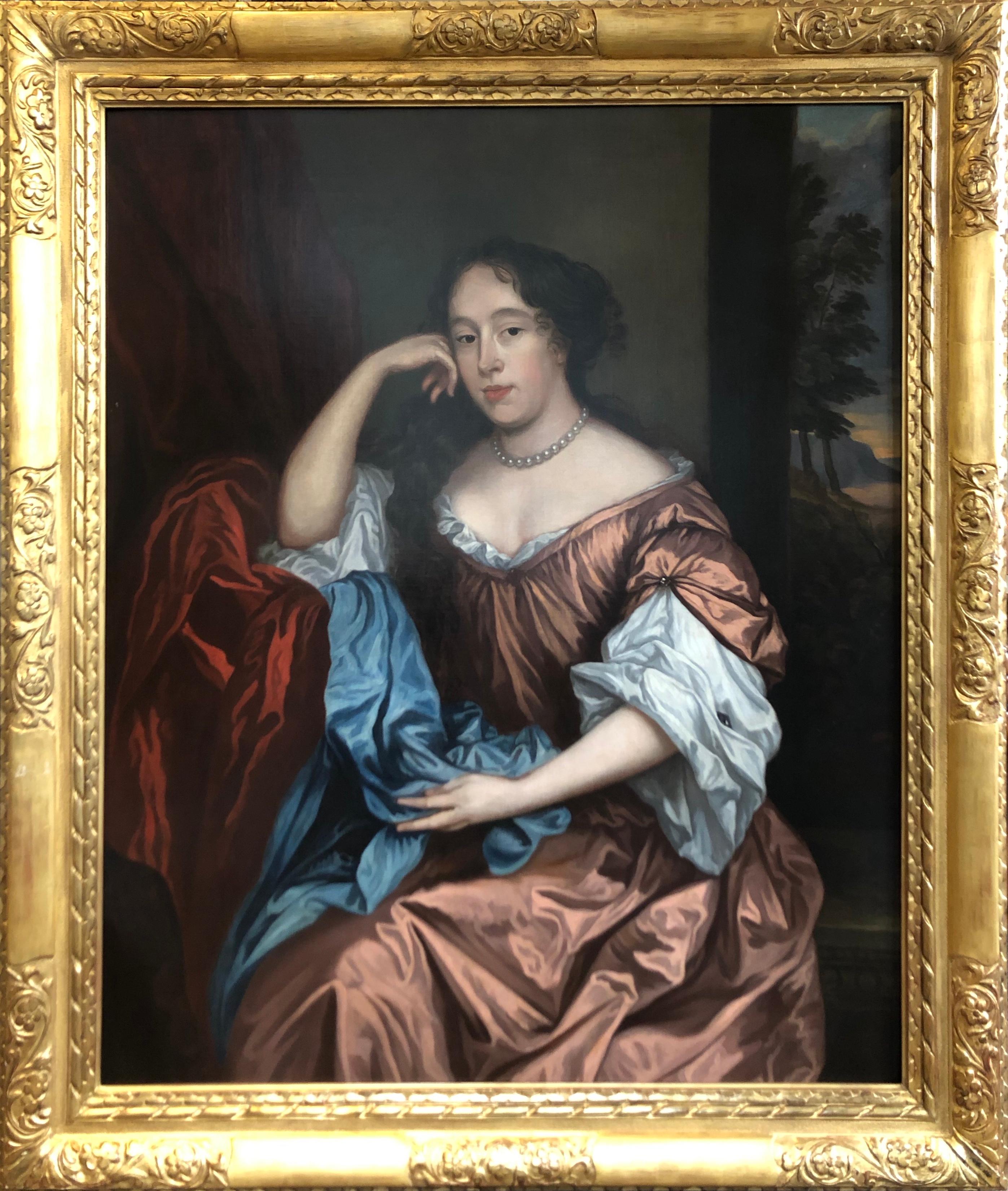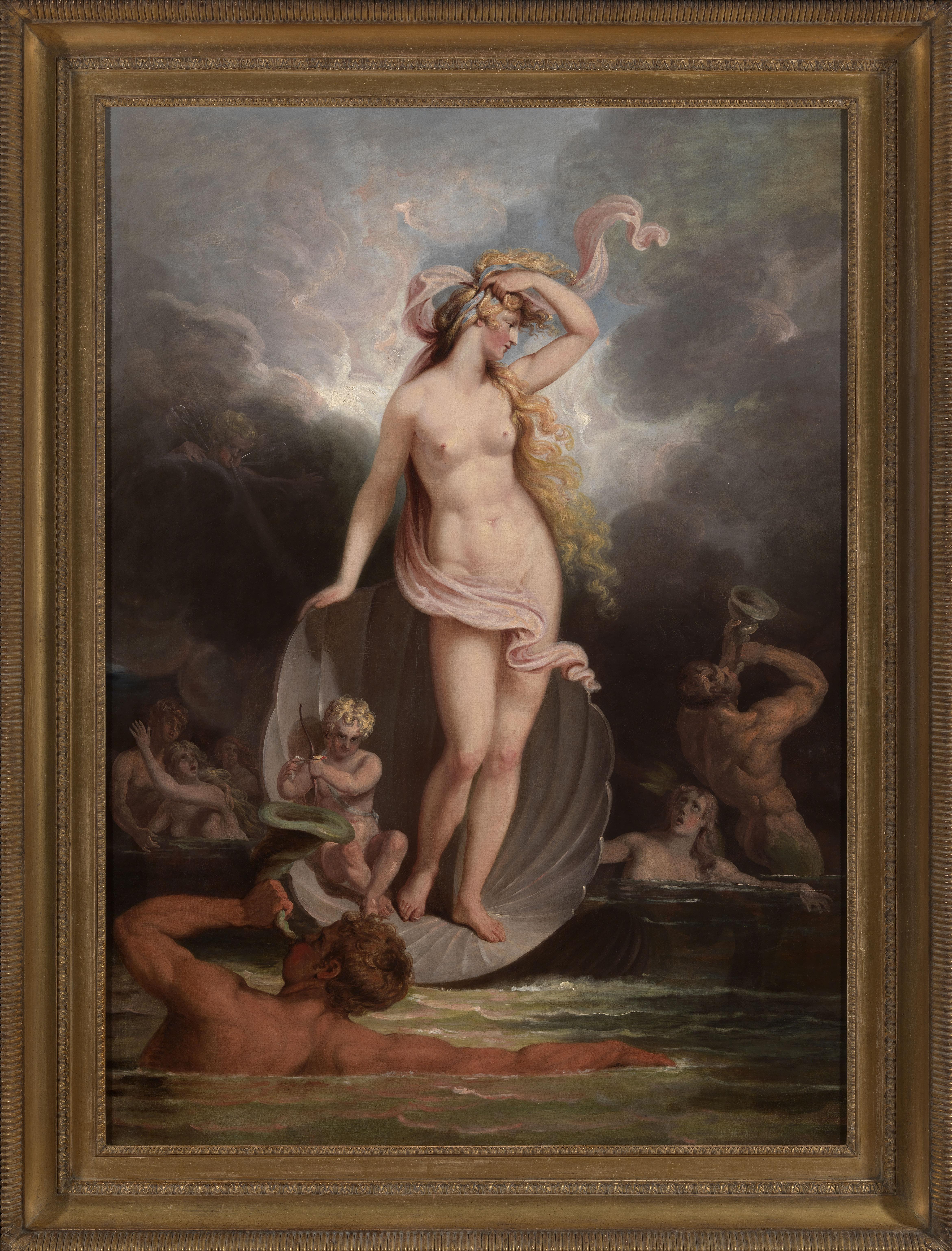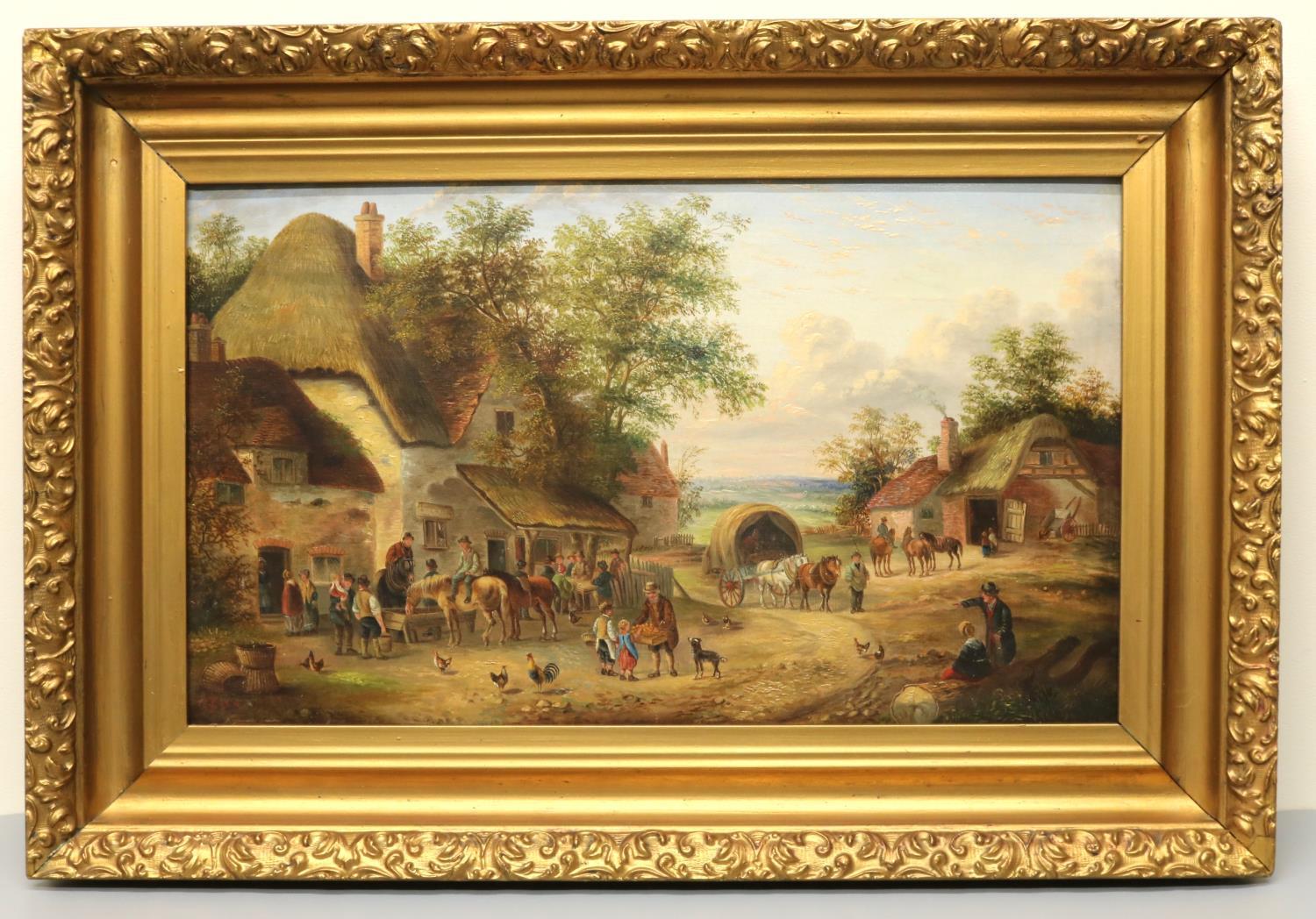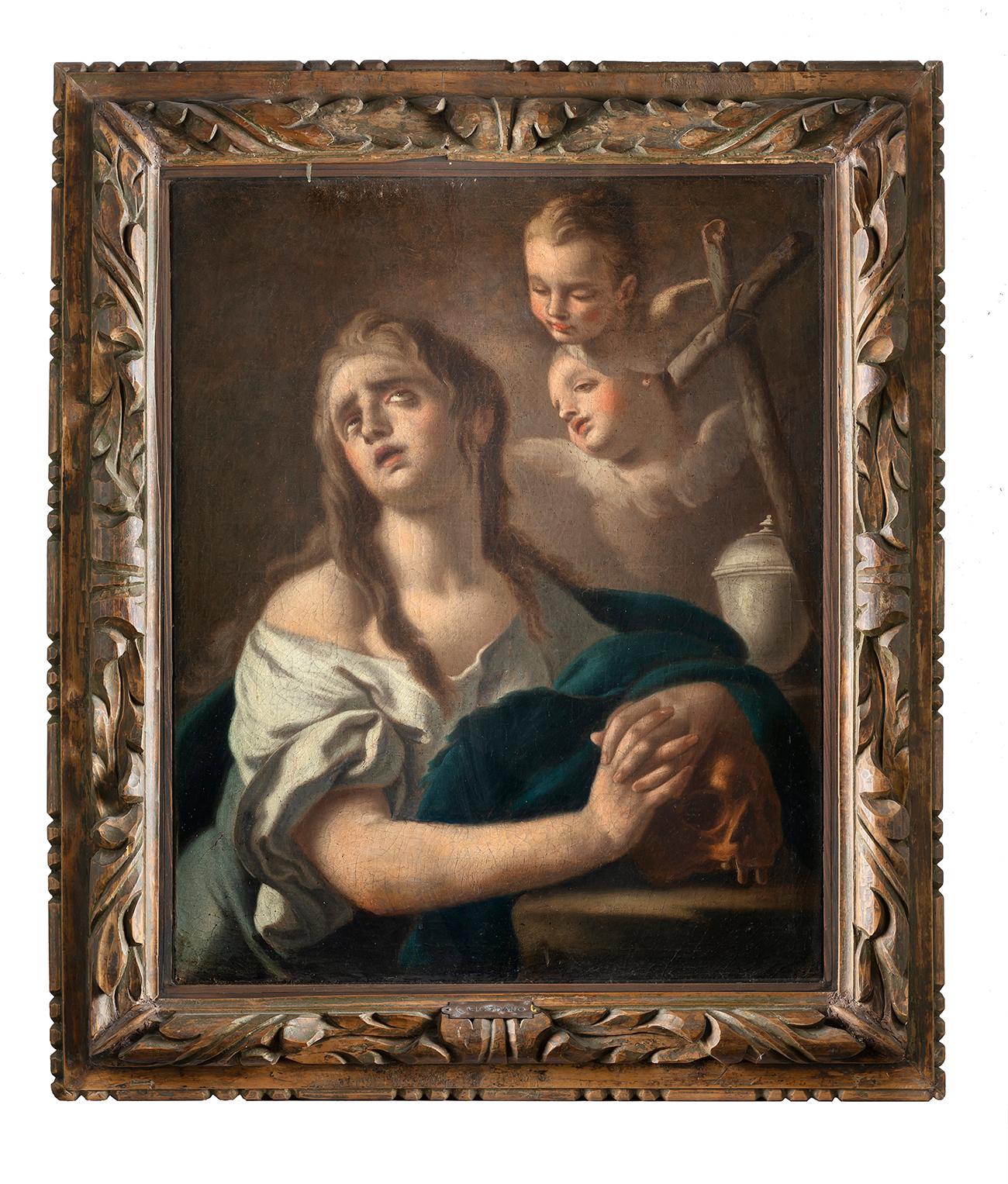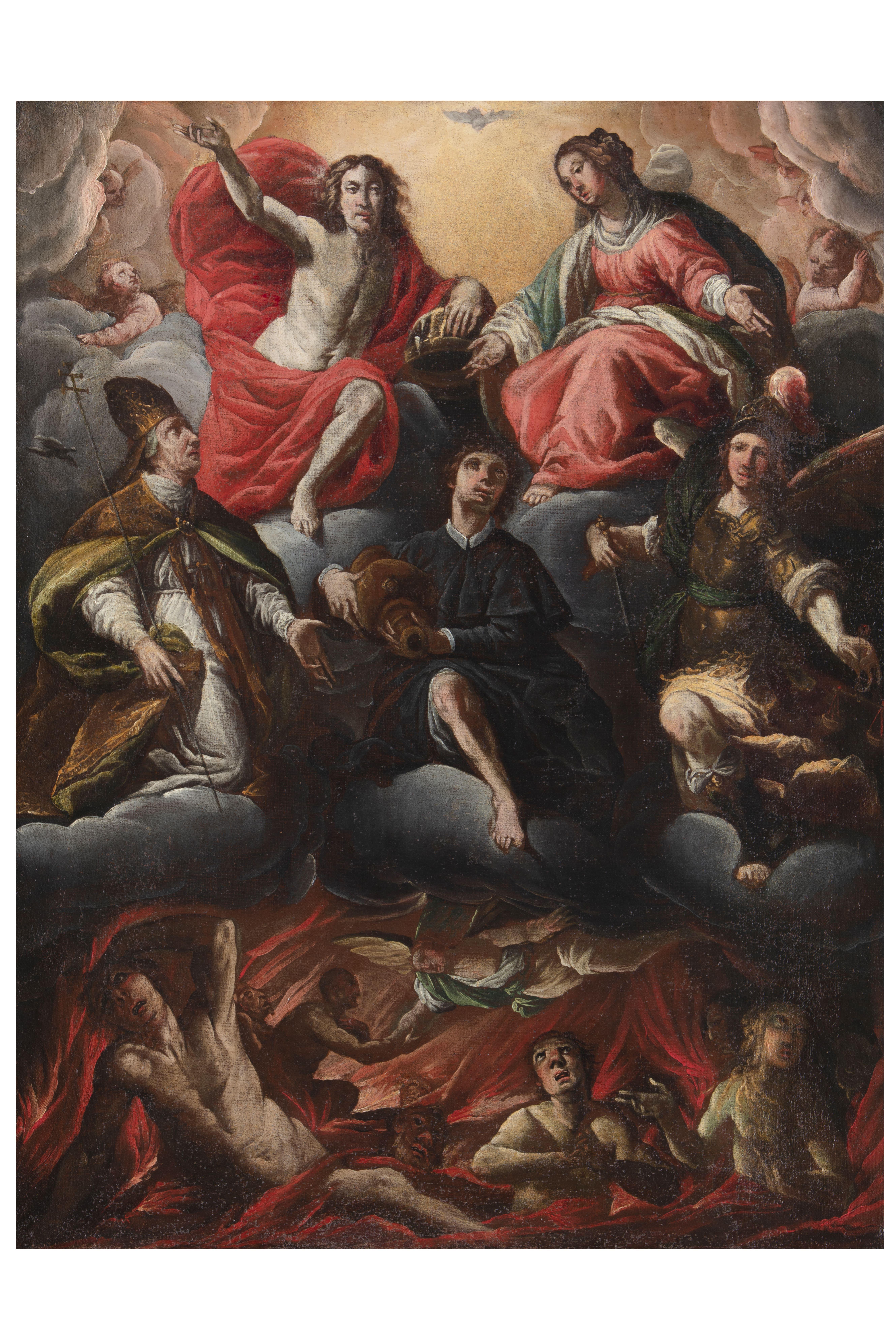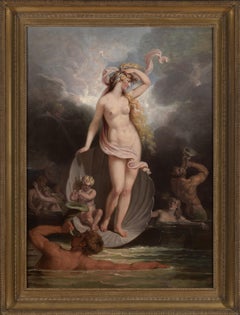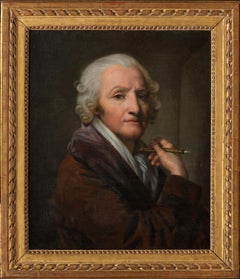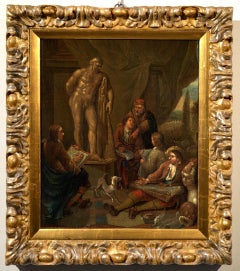
Painting Lesson Circle of Van Den Bossche Oil on Canvas Old Master 17/18th C.
Want more images or videos?
Request additional images or videos from the seller
1 of 20
Painting Lesson Circle of Van Den Bossche Oil on Canvas Old Master 17/18th C.1695-1730
1695-1730
About the Item
- Creation Year:1695-1730
- Dimensions:Height: 26.78 in (68 cm)Width: 23.23 in (59 cm)
- Medium:
- Movement & Style:
- Circle Of:Balthasar van den Bossche (1681 - 1715, Flemish, Belgian)
- Period:
- Condition:
- Gallery Location:Riva del Garda, IT
- Reference Number:1stDibs: LU98817721352
About the Seller
4.8
Platinum Seller
These expertly vetted sellers are 1stDibs' most experienced sellers and are rated highest by our customers.
Established in 2017
1stDibs seller since 2018
200 sales on 1stDibs
More From This SellerView All
- Circumcision Christ Lairesse Flemish Paint Oil on canvas Old master 17th CenturyBy Gérard de Lairesse (Liège 1641 - Amsterdam 1711)Located in Riva del Garda, ITGérard de Lairesse (Liège 1641 - Amsterdam 1711), attributed Circumcision of Christ Oil on canvas, 120 x 102 cm., In frame 138 x 119 cm. The p...Category
17th Century Old Masters Figurative Paintings
MaterialsOil
$10,675 Sale Price20% Off - Winged Putti Paint Oil on canvas Baroque 17th Century Mitological MichelangeloLocated in Riva del Garda, ITAttributed to Giovanni Battista Merano (Genoa 1632 - Piacenza 1698) Pair of winged cherubs with chains Genoese school, around 1670-80 Oil on canvas, 67 x 57 cm. Framed 89 x 78 cm. This pleasant painting, depicting a pair of winged cherubs, is attributed to Genoese Giovan Battista Merano (Genoa 1632 - Piacenza 1698), trained in Genoa first in the workshop of Giovanni Andrea De Ferrari, and then of Valerio Castello, of whom he became one of the best students. It was probably the latter who advised the student to stay in the then Duchy of Parma to study Correggio and Parmigianino, as he had done in his time. During this first stay in Parma Giovanni Battista worked on the fresco decoration of the oratory...Category
17th Century Old Masters Paintings
MaterialsOil
$6,726 Sale Price20% Off - Banquet Attrib to Van Den Hoecke Religious Oil on Table Old Master 17th CenturyBy Gaspar van den Hoecke (Antwerp, 1585 - 1648)Located in Riva del Garda, ITGaspar van den Hoecke (Antwerp, 1585 - 1648) Herod's banquet Early 17th century oil on panel, with gold highlights (in the guise of Salome and in the curtains of the building in the background) 56 x 80 cm. framed 72 x 90 cm. Note: The painting probably dates from an original by Frans II Francken (1581 - 1642), which is shown under the number 0000344789 in the RKD. Valuable oil painting on panel depicting King Herod and the beautiful Jewish princess Salome according to the episode taken from the Gospel of Matthew (14.3-11), which sees her as the protagonist in the story of the martyrdom of John the Baptist. The event shown is a cross between history and legend, a myth faced for centuries by artists in every field: Caravaggio in painting, Oscar Wilde in theater, Richard Strauss...Category
17th Century Old Masters Paintings
MaterialsOil
$14,196 Sale Price20% Off - Flowers Paint Oil on canvas Old master 17th Century Italy Still-life ArtLocated in Riva del Garda, ITMaster of the Grotesque Vase (active in Rome and Naples in the first quarter of the 17th century) Still life of flowers in a classic vase oil on canvas 66 x 51 cm, In frame cm. 82 x...Category
17th Century Old Masters Paintings
MaterialsOil
$7,609 Sale Price20% Off - Portrait Paint Oil on canvas Old master 16/17th Century Italian Raffaello ArtLocated in Riva del Garda, ITTuscan painter active towards the end of the 16th century Portrait of Captain Niccolò Orsini (Pitigliano, 1442 - Lonigo, 1510), count of Pitigliano and Nola. Tuscany, end of the 16th century Oil on canvas, 64 x 47 cm., Framed 89 x 73 cm. The portrait we present to you shows the effigy of a vigorous high-ranking male figure in armor, in the most typical Renaissance pose, half-length and taken in profile, with his face and gaze turned to the side; the serious and intense expression and the facial features evoke at first glance the portraiture of early Florentine mannerism. He is Niccolò III Orsini (Pitigliano, 1442 - Lonigo, 1510), count of Pitigliano and Nola and son of Aldobrandino Orsini, famous leader and captain (or capitano di ventura) who lived between the fifteenth and sixteenth centuries, who served for the state Pontifical in Naples and Florence and above all for the Republic of Venice. Portraiture with these characters, which derives from ancient coinage, was used in the sixteenth century in the sequences of Portraits of Illustrious Men, both in painting and in sculpture. The profile portrait was in fact a genre reserved, according to the Renaissance tradition, for celebrations, presenting those characteristics of imperturbability typical of the military role covered. Our painting is a work created by an author active in Tuscany towards the end of the sixteenth century, adhering to those pictorial styles made famous by the portraitist Cristofano di Papi dell'Altissimo (1530-1605), a pupil of Bronzino and then of Pontormo, known for having created a collection of about 500 portraits of illustrious men, known as the 'Gioviana Series' (now in the Uffizi Gallery); and among these it is possible to identify one dedicated to Niccolò Orsini. Our painting is inspired, in particular, by a print taken from the collection of prints...Category
16th Century Old Masters Paintings
MaterialsOil
- Landscape Crucifixion Christ Paint Oil on canvas Old master 17th CenturyBy Scipione Compagni, or Compagno (Naples, about 1624 - after 1680)Located in Riva del Garda, ITScipione Compagni, or Compagno (Naples, about 1624 - after 1680) Fantastic landscape with the Crucifixion of Christ on Mount Calvary Oil painting on canvas cm. 47 x 62 with antique frame cm. 63 x 78 cm. We present with great pleasure this rich representation, executed in the second half of the seventeenth century, whose stylistic and composition features reflect the stylistic features of the Neapolitan lesson: the warm colors, the lively chromatic range, the quick but precise brushstrokes are elements that lead us, in particular, to the hand of Scipione Compagno. It fits fully into the classic production of the Neapolitan painter, characterized by compositions filled with numerous figures, assembled with great formal elegance, where the painter re-elaborates the mannerist suggestions but in a theatrical key and consequently reaches an extremely refined Baroque vision of the narrative. The reminiscences with the painting of Filippo Angeli are evident, but above all the similarities with Domenico Gargiulo, known as Micco Spadaro, distinguished by elegant and precious chromatic accords, and with some references to Roman painting of the early seventeenth century. In the work, in fact, references to Roman and Neapolitan classicism are observed, with the bright and bright palette that we can trace back to the painter's mature works. The painting, characterized by a multitude of characters, shows the scene of the Crucifixion on Mount Calvary, where the three crosses stand out against the background illuminated by a clear light, in an almost otherworldly atmosphere of a mountainous river landscape in front of the city of Jerusalem. in the distance. Watching the dying Christ tortured we can see the three Marys, with the Virgin in red dress and blue cloak, surrounded by other women and soldiers, some of them on horseback, one of whom holds a spear with which he inflicted the wound in the side of Christ. In the foreground, again, numerous men, women and children, who attend the scene of the Crucifixion. The bright and clear colorism of the work in question is typical of Neapolitan painting...Category
17th Century Old Masters Paintings
MaterialsOil
$7,722 Sale Price20% Off
You May Also Like
- Portrait of a Lady, After Sir Peter Lely (1610-1680) Oil PaintingBy After Sir Peter LelyLocated in Uppingham, GBOil Painting After Sir Peter Lely (1610-1680) Portrait of a Lady Housed in a Lely gold Leaf Frame. Peter Lely: In 1647 he became a member of the Pain...Category
17th Century Old Masters Portrait Paintings
MaterialsOil
- 18th century allegorical painting of The Triumph of BeautyLocated in London, GBExhibited: London, Royal Academy, 1800, no. 93 What was happening in British history painting in around 1800? In recent discussions of the emergence of a British School of history painting following the foundation of the Royal Academy in 1768, this is a question which is rarely posed and one which is not easily answered. Examination of surviving Royal Academy exhibition catalogues reveals a profusion of artists’ names and titles, few of which remain immediately recognizable, whilst endeavours to explain the impact of exhibition culture on painting - such as the 2001 Courtauld show Art on the Line - have tended to focus on the first and second generation of Royal Academician, rather than young or aspiring artists in the early nineteenth century. This makes the discovery and identification of the work under discussion of exceptional importance in making sense of currents in English painting around 1800. Executed by Edward Dayes...Category
18th Century Old Masters Figurative Paintings
MaterialsCanvas, Oil
- Portrait of Jean-Baptiste Greuze, painted on linen by his daughter Anna GreuzeLocated in PARIS, FRThis replica of the last self-portrait of Jean-Baptiste Greuze painted in 1804, executed by his daughter Anna at her father's side and recently rediscovered, provides us with a poignant image of the great artist, represented with panache despite the disillusions of life. 1. Jean-Baptiste Greuze Jean-Baptiste Greuze was the sixth child of a roofer from Tournus and retained a certain rusticity in his behaviour from his provincial childhood, beyond his taste for describing picturesque scenes of the countryside. He initially started training with a little-known painter from Lyon, Charles Grandon, before his genius was recognised in Paris where he became a full-time student of the Académie (of Painting) in 1755. He exhibited his work for the first time at the Salon during the summer of 1755, before leaving on a trip to Italy in the company of Louis Gougenot, abbot of Chezal-Benoît. Upon his return to Paris, Greuze became a prolific painter, participating widely in the Salons held between 1759 and 1765, to which he sent no less than 63 paintings: numerous genre scenes (The Marriage Contract, The Beloved Mother), but also portraits of his family circle, of courtiers and art lovers, or of his colleagues. The Academy closed the doors of the Salons to him in 1767 for not having produced his reception piece within six months of his reception, as was the tradition. He worked actively on this painting (Emperor Severus rebukes Caracalla, his son, for trying to assassinate him ) until the summer of 1769, tackling historical and mythological subjects for the first time. Once this was completed, he was then fully admitted to the Academy, but as a genre painter, and not as an historical painter, which had been one of the greatest humiliations of his life. Greuze then refused any participation in events organised by the Academy or its successor, the Academy of Fine Arts until 1800. Abandoning history painting, he gave a new twist to genre scenes, bringing them closer to history painting, as in this pair of canvases which constitutes some of his masterpieces: The Paternal Curse: The Ungrateful Son and The Paternal Curse: The Punished Son . Married in 1759 to Anne-Gabrielle Babuti, the daughter of a Parisian bookseller, his marriage was unhappy and his wife probably frequently unfaithful. The institution of divorce enabled him to record their separation in 1793, keeping his two daughters Anna-Geneviève, born in April 1762, and Louise-Gabrielle, born in May 1764, with him. Little is known about his daughter Anna except that she was herself a painter and lived with her father until his death. It is likely that most of the paintings she produced up to that date were attributed to her father, whose technique she shared to a great extent, making it extremely difficult to establish an autonomous corpus of her paintings. Greuze died in his studio at the Louvre on March 21st 1805. The attention paid to the expressivity of his characters and the emotional charge they convey enabled Jean-Baptiste Greuze to enjoy immense popularity with the eighteenth-century public, and they still constitute Greuze's true modernity. As the artist said, "I dipped my brush in my heart". Greuze was also an exceptional draughtsman and a portraitist of immense talent and exceptional longevity who painted both the Dauphin (the son of Louis XV and father to Louis XVI) and the young Napoleon Bonaparte. 2. Greuze's self-portraits Greuze was very much influenced by Dutch paintings during all his life. While the source of his inspiration for genre scenes can be found in Gerard Dou...Category
Early 1800s Old Masters Portrait Paintings
MaterialsLinen, Oil
- Stag Hunting in the Vicinity of Nuremberg by a German Artist Peter von BemmelLocated in PARIS, FRThis small landscape shows a hunting scene: two riders are chasing a stag with their dogs at the edge of a forest. Signed by Peter von Bemmel, it is typical of the production of this...Category
1720s Old Masters Landscape Paintings
MaterialsCopper
- 19th century landscape village scene horses, animals inn by georgina laraBy Georgina LaraLocated in York, GBA very fine village scene depicting An English Village with figures, animals, horses, and cart by an Inn, oil on canvas, indistinctly signed,G Lara , lower left The size being 51cm x 31cm whilst overall being 66 cm x 47cm in excellent ready to hang condition Georgina Lara was also known as Edwina Lara ,she was a London painter of rustic farmyard and village scenes. Her work is extremely similar to Edward Masters who also went by the name of William Masters...Category
19th Century Old Masters Figurative Paintings
MaterialsOil
- 17th Century by Giulio Benso The Expulsion of the Merchants From the TempleLocated in Milano, LombardiaGiulio Benso (Genoa, 1592 - 1668) Nineteenth-century shaped and gilded wooden frame The marvellous canvas, a masterpiece by Giulio Benso, a 17th-century Genoese painter, depicts the...Category
Early 17th Century Old Masters Figurative Paintings
MaterialsCanvas, Oil
Recently Viewed
View AllMore Ways To Browse
David Elder
Guild Report
David Gerard
17th C Marble
Italian Carved Stone Bust
Marble Bust David
Farnese Hercules
Old Marble Bust
Hand Carved Aged Marble Bust
Hercules Bust
Stone Window Frame Antique
Bust Of David Stone
Flemish Bust
Antique Laboratory Stand
Oil Painting Landscape Blue
Studio Note
Flowers In Oil
Landscape With Figures
